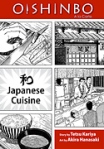‘Tis the season for lists of the best comics and graphic novels of 2009, an event I always enjoy more as a spectator than as a provider. I would feel comfortable listing my favorite comics of the year, but some pocket of insecurity blocks me from using the word “best.” Fortunately, ‘tis also the season to nominate titles for the 2010 Will Eisner Comics Industry Awards.
As you might recall, there was some disgruntlement over the rather narrow field of manga nominees in last year’s Eisner slate. This came on after a couple of years where there was a healthy sprinkling of comics and creators from Japan throughout the roster. While complaining afterwards is always fun (it’s the peak pleasure of “Best of” season, after all), I thought it certainly couldn’t hurt to throw out some suggestions for various Eisner categories while it might still make a difference.
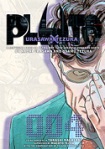
 Just looking at the aforementioned “Best of” lists, we can be reasonably certain that at least two titles are locks for some form of Eisner nomination: Naoki Urasawa’s Pluto: Urasawa x Tezuka (Viz) and Yoshihiro Tatsumi’s A Drifting Life (Drawn & Quarterly). They’re the two comics from Japan that have appeared most frequently on lists of the best comics and graphic novels of 2009. They’re fine choices and among my favorite new works from 2009, but their respective inevitability makes me disinclined to dwell on them too much, except to recommend that A Drifting Life be nominated in the Best Reality-Based Work category.
Just looking at the aforementioned “Best of” lists, we can be reasonably certain that at least two titles are locks for some form of Eisner nomination: Naoki Urasawa’s Pluto: Urasawa x Tezuka (Viz) and Yoshihiro Tatsumi’s A Drifting Life (Drawn & Quarterly). They’re the two comics from Japan that have appeared most frequently on lists of the best comics and graphic novels of 2009. They’re fine choices and among my favorite new works from 2009, but their respective inevitability makes me disinclined to dwell on them too much, except to recommend that A Drifting Life be nominated in the Best Reality-Based Work category.
 I make that suggestion because 2009 saw a whole lot of extraordinary comics from Japan, so the real estate in the Best U.S. Edition of Foreign Material – Japanese category will be costly indeed. To start, there’s Urasawa’s other series in current release, 20th Century Boys, which I actually prefer to Pluto. I’m not saying it’s a better comic point by point, but I enjoy reading it more. It may lack Pluto’s seriousness of purpose and craftsmanship, but it’s compulsively readable and friendlier. Perhaps the solution is to nominate Urasawa in the Best Writer/Artist – Drama category or to nominate Pluto in the Best New Series slate. Urasawa has popped up in a variety of categories in the past, and I see no reason for that trend to stop now.
I make that suggestion because 2009 saw a whole lot of extraordinary comics from Japan, so the real estate in the Best U.S. Edition of Foreign Material – Japanese category will be costly indeed. To start, there’s Urasawa’s other series in current release, 20th Century Boys, which I actually prefer to Pluto. I’m not saying it’s a better comic point by point, but I enjoy reading it more. It may lack Pluto’s seriousness of purpose and craftsmanship, but it’s compulsively readable and friendlier. Perhaps the solution is to nominate Urasawa in the Best Writer/Artist – Drama category or to nominate Pluto in the Best New Series slate. Urasawa has popped up in a variety of categories in the past, and I see no reason for that trend to stop now.
 Of course, I would hope that there’s room in the Best Writer/Artist roster for Takehiko Inoue, who has three series currently in English release, all from Viz: samurai epic Vagabond, available in regular and VizBig editions; shônen hoops classic Slam Dunk; and the achingly good, criminally underappreciated Real, which examines the lives of wheelchair basketball players. If the judges can’t bring themselves to give Inoue a Writer/Artist slot, I urge them in the strongest possible terms to save a space in Best U.S. Edition of Foreign Material – Japanese or Best Continuing Series for Real, because it’s one of the finest comics currently in release, magnificently drawn and faultlessly written.
Of course, I would hope that there’s room in the Best Writer/Artist roster for Takehiko Inoue, who has three series currently in English release, all from Viz: samurai epic Vagabond, available in regular and VizBig editions; shônen hoops classic Slam Dunk; and the achingly good, criminally underappreciated Real, which examines the lives of wheelchair basketball players. If the judges can’t bring themselves to give Inoue a Writer/Artist slot, I urge them in the strongest possible terms to save a space in Best U.S. Edition of Foreign Material – Japanese or Best Continuing Series for Real, because it’s one of the finest comics currently in release, magnificently drawn and faultlessly written.
 On the subject of magnificently drawn and beautifully written manga, this will be judges’ final opportunity to recognize Kaoru Mori’s breathtaking period drama, Emma (CMX). The tenth and final volume came out earlier this winter, offering a satisfying conclusion to the driving storyline and a sentimental farewell to the rich cast of supporting characters that made this series so rewarding. Intelligent, meticulously researched, emotionally resonant, and all-around glorious, a lot of people are going to miss this book terribly.
On the subject of magnificently drawn and beautifully written manga, this will be judges’ final opportunity to recognize Kaoru Mori’s breathtaking period drama, Emma (CMX). The tenth and final volume came out earlier this winter, offering a satisfying conclusion to the driving storyline and a sentimental farewell to the rich cast of supporting characters that made this series so rewarding. Intelligent, meticulously researched, emotionally resonant, and all-around glorious, a lot of people are going to miss this book terribly.

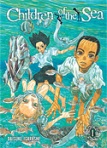 In a rather different vein, one devoid of delicacy or refinement but brimming with genius, please don’t forget Junko Mizuno’s subversive Little Fluffy Gigolo Pelu (Last Gasp). Mizuno is a household name, assuming that household name counts a hardcore comics omnivore among its residents. She should be more famous, with her inimitable aesthetic and subversive sensibilities, and Pelu could be the book that pushes her over the top. It’s a profane, hilarious look at the intersection of sex, love and obsession from the perspective of a sentient space ovary. It’s the comic equivalent of a hallucinogen mixed with an amphetamine, and it’s my favorite new manga of 2009. But I would also hope that there’s room for Daisuke Igarashi’s Children of the Sea (Viz), the first release in that publisher’s tremendously promising SigIKKI imprint of alternative manga. It’s a contemporary environmental fable with absolutely immersive artwork and subdued storytelling all around.
In a rather different vein, one devoid of delicacy or refinement but brimming with genius, please don’t forget Junko Mizuno’s subversive Little Fluffy Gigolo Pelu (Last Gasp). Mizuno is a household name, assuming that household name counts a hardcore comics omnivore among its residents. She should be more famous, with her inimitable aesthetic and subversive sensibilities, and Pelu could be the book that pushes her over the top. It’s a profane, hilarious look at the intersection of sex, love and obsession from the perspective of a sentient space ovary. It’s the comic equivalent of a hallucinogen mixed with an amphetamine, and it’s my favorite new manga of 2009. But I would also hope that there’s room for Daisuke Igarashi’s Children of the Sea (Viz), the first release in that publisher’s tremendously promising SigIKKI imprint of alternative manga. It’s a contemporary environmental fable with absolutely immersive artwork and subdued storytelling all around.
 Speaking of the SigIKKI iprint, I see nothing that would prevent anyone from nominating the SigIKKI site in the Best Anthology category. One of the great pleasures of 2009 has been the ability to read new chapters of around a dozen exciting, alternative manga titles each Thursday. Beyond the extraordinary quality of some of the comics in rotation (many of which will be likely Eisner candidates when they see print), the whole thing strikes me as a very forward-looking initiative, a smart and generous loss leader to build an audience for books with perhaps marginal commercial potential.
Speaking of the SigIKKI iprint, I see nothing that would prevent anyone from nominating the SigIKKI site in the Best Anthology category. One of the great pleasures of 2009 has been the ability to read new chapters of around a dozen exciting, alternative manga titles each Thursday. Beyond the extraordinary quality of some of the comics in rotation (many of which will be likely Eisner candidates when they see print), the whole thing strikes me as a very forward-looking initiative, a smart and generous loss leader to build an audience for books with perhaps marginal commercial potential.
 Back on the subject of taking your last chance to recognize worthy work, judges might also do something really nervy and give a slot in the Best U.S. Edition of Foreign Material – Japanese to Natsuki Takaya’s Fruits Basket (Tokyopop). Commercial success has never been a barrier to nomination in the past, and Fruits Basket is so much more than the piles and piles of money it made. It was a wrenching and lovely series throughout, and it ended with all of the grace and emotion its fans had every reason to expect. The Eisners haven’t nominated a shôjo title in this category since Fumi Yoshinaga’s Antique Bakery in 2007. (And while it’s not shôjo, nor is it explicitly for teens, keep an eye on Yoshinaga’s Ôoku from Viz for 2011. It’s off to a promising start, but I suspect it will hit its full stride next year.)
Back on the subject of taking your last chance to recognize worthy work, judges might also do something really nervy and give a slot in the Best U.S. Edition of Foreign Material – Japanese to Natsuki Takaya’s Fruits Basket (Tokyopop). Commercial success has never been a barrier to nomination in the past, and Fruits Basket is so much more than the piles and piles of money it made. It was a wrenching and lovely series throughout, and it ended with all of the grace and emotion its fans had every reason to expect. The Eisners haven’t nominated a shôjo title in this category since Fumi Yoshinaga’s Antique Bakery in 2007. (And while it’s not shôjo, nor is it explicitly for teens, keep an eye on Yoshinaga’s Ôoku from Viz for 2011. It’s off to a promising start, but I suspect it will hit its full stride next year.)
 Of course, it wouldn’t be the worst thing in the world if Fruits Basket was nominated in the Best Publication for Teens category, which manga could handily pack from top to bottom and still have partisans crying out at the injustice of some exclusion or another. I’ll limit myself to one suggestion for this category, Karuho Shiina’s Kimi ni Todoke: From Me to You (Viz). It’s a hilarious romantic comedy about an outwardly creepy but inwardly sparkly girl trying to make friends on her own terms. It seesaws smartly between laughter and tears and speaks to the odd kid out.
Of course, it wouldn’t be the worst thing in the world if Fruits Basket was nominated in the Best Publication for Teens category, which manga could handily pack from top to bottom and still have partisans crying out at the injustice of some exclusion or another. I’ll limit myself to one suggestion for this category, Karuho Shiina’s Kimi ni Todoke: From Me to You (Viz). It’s a hilarious romantic comedy about an outwardly creepy but inwardly sparkly girl trying to make friends on her own terms. It seesaws smartly between laughter and tears and speaks to the odd kid out.
 Moving down the age scale, someone really should recognize Yen Press for rescuing Kiyohiko Azuma’s Yotsuba&! from publishing limbo. It was nominated in 2008 in the Best Publication for Kids category (or whatever it was called back then), and another nomination is in order. It’s still one of the funniest, freshest comics around, following a green-haired girl as she experiences the world’s many wonders, from riding a bike to running errands. Of course, it wasn’t conceived for kids, but who cares? And if you, like me, don’t read as many comics for kids as you feel you should, you can always check out this marvelous list of the year’s best from Good Comics for Kids.
Moving down the age scale, someone really should recognize Yen Press for rescuing Kiyohiko Azuma’s Yotsuba&! from publishing limbo. It was nominated in 2008 in the Best Publication for Kids category (or whatever it was called back then), and another nomination is in order. It’s still one of the funniest, freshest comics around, following a green-haired girl as she experiences the world’s many wonders, from riding a bike to running errands. Of course, it wasn’t conceived for kids, but who cares? And if you, like me, don’t read as many comics for kids as you feel you should, you can always check out this marvelous list of the year’s best from Good Comics for Kids.
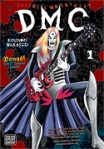
 Given that it’s so damned funny, Yotsuba&! might also sit comfortably in the Best Humor Publication category, but I have other plans there. The first involves a nomination for Kiminori Wakasugi’s hilariously distasteful Detroit Metal City (Viz), about a would-be emo-pop crooner forced to moonlight as a vile, death-metal front man. The second involves a nomination for Koji Kumeta’s dense satire, Sayonara, Zetsubou-Sensei: The Power of Negative Thinking (Del Rey). Beyond being a master class in the art and science of translation, this is a very funny book.
Given that it’s so damned funny, Yotsuba&! might also sit comfortably in the Best Humor Publication category, but I have other plans there. The first involves a nomination for Kiminori Wakasugi’s hilariously distasteful Detroit Metal City (Viz), about a would-be emo-pop crooner forced to moonlight as a vile, death-metal front man. The second involves a nomination for Koji Kumeta’s dense satire, Sayonara, Zetsubou-Sensei: The Power of Negative Thinking (Del Rey). Beyond being a master class in the art and science of translation, this is a very funny book.
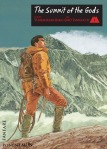 Jiro Taniguchi is a good writer, and he’s a positively magnificent illustrator, so I would recommend he be nominated as Best Penciller for his work on The Summit of the Gods (Fanfare/Ponent Mon), written by Baku Yumemakura. For reinforcement, Taniguchi sturdily wrote and gorgeously drew A Distant Neighborhood (Fanfare/Ponent Mon).
Jiro Taniguchi is a good writer, and he’s a positively magnificent illustrator, so I would recommend he be nominated as Best Penciller for his work on The Summit of the Gods (Fanfare/Ponent Mon), written by Baku Yumemakura. For reinforcement, Taniguchi sturdily wrote and gorgeously drew A Distant Neighborhood (Fanfare/Ponent Mon).
 I can’t quite bring myself to recommend Inio Asano’s What a Wonderful World! (Viz) for a major category; there’s some outstanding work contained in these two volumes of short stories, but a goodly portion is merely very good. I’d have no reservations about suggesting “A Town of Many Hills” from the first volume for the Best Short Story prize, as it shows Asano at the peak of his considerable powers.
I can’t quite bring myself to recommend Inio Asano’s What a Wonderful World! (Viz) for a major category; there’s some outstanding work contained in these two volumes of short stories, but a goodly portion is merely very good. I’d have no reservations about suggesting “A Town of Many Hills” from the first volume for the Best Short Story prize, as it shows Asano at the peak of his considerable powers.
 I’m not really worried that Taiyo Matsumoto’s GoGo Monster (Viz) will be neglected. It’s just too good. The only question is in which categories it will be nominated. To my thinking, it’s eligible for Best U.S. Edition of Foreign Material – Japanese, Best Graphic Album – Reprint Material, and Best Publication Design. Judges may want to limit that last possibility to new designs rather than stateside reproductions, but the packaging is extraordinary.
I’m not really worried that Taiyo Matsumoto’s GoGo Monster (Viz) will be neglected. It’s just too good. The only question is in which categories it will be nominated. To my thinking, it’s eligible for Best U.S. Edition of Foreign Material – Japanese, Best Graphic Album – Reprint Material, and Best Publication Design. Judges may want to limit that last possibility to new designs rather than stateside reproductions, but the packaging is extraordinary.
None of the Eisner categories will be easy to limit, but I suspect that Best Archival Collection will be particularly difficult. I’m not going to make it any easier. A year without a nomination for a work by Osamu Tezuka would just seem odd, and Vertical has been providing a valuable service (and really entertaining comics) by releasing a steady stream of Tezuka’s excellent medical melodrama Black Jack. At least some of the material in culinary classic Oishinbo (Viz), written by Tetsu Kariya and illustrated by Akira Hanasaki, is 20 years old, and all of it is lively, informative, and enriches the scope of Japanese comics available in translation and available comics in general. If it doesn’t qualify for the archival award, put it in the Best Edition of Foreign Material – Japanese. Just put it somewhere. Beyond being very, very good on strictly qualitative terms, Susumu Katsumata’s Red Snow (Drawn and Quarterly) gives readers a glimpse of a different kind of gekiaga, a category of dramatic comics for grown-ups previously defined by the aforementioned Tatsumi.
Entries for Eisner consideration are due March 8. Publishers, get cracking. Judges, get reading.

